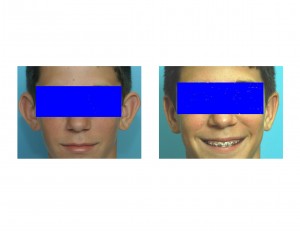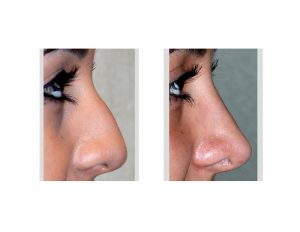While teenagers (under 18 years of age) make up just a small fraction of all plastic surgery patients, that percent has decreased over the past decade. According to statistics from the American Society of Aesthetic Plastic Surgery, teenagers represented about 3.5% of all procedures performed in 2001 and decreased to about 1.5% by 2009. This is interesting in light of all the plastic surgery reality shows and press that cosmetic surgery garners. It is the public’s perception that such exposure from the TV and internet promotes teens to want and subsequently undergo plastic surgery The statistics, however, shows that it simply isn’t so. The reason is economics. Teens simply can’t afford plastic surgery, or even get it, without parental consent and financial assistance.

Beyond otoplasty, the nose and breast represent the majority of other teen cosmetic surgeries. Rhinoplasty or nose reshaping has always been a highly requested aesthetic surgical procedure by teens. It can be performed when the nose has completed 90 percent of its growth, which can occur as early as age 13 or 14 in girls and 15 or 16 in boys. Because of internal breathing problems from septal deviation and broken noses, this also serves as an opportune time to change how it looks as well.
Teen breast surgery is just as common in boys as it is girls. In some teenage boys, excessive breast development (gynecomastia) can become a significant psychosocial problem. It has kept many teen boys from participating in sports and becoming a recluse at the swimming pool. Gynecomastia reduction helps make the chest flatter and more masculine. Breast reduction is frequently performed on girls also with overly large breasts that may cause back and shoulder pain, as well as restrict physical activity. Breast reduction usually is delayed until the breasts have reached full development closer to age 15 or 16.
Why does breast augmentation not appear as a teen procedure? With the exception of significant breast asymmetry or congenital or traumatic deformities, federal regulations prohibit breast implants for those under the age of 18. But it is done for medical reasons and represents about 1% of all breast implants placed in the U.S.. Severe breast asymmetry, Poland’s Syndrome (congenital absent breast), tubular breast deformity and congenital micromastia (severe underdevelopment) are the medical reasons breast reconstruction with implants is done in teen girls.
Interestingly, liposuction is very uncommonly performed on teenagers. There are but a few thousand procedures that are done per year. This reflects the general cautious approach to liposuction by most plastic surgeons and the belief that weight and body contour at this age requires non-surgical management.
The past decade has shown that the expansion in plastic surgery has not, and probably should not, translate to teenagers. But the reshaping and reconstruction of prominent ears and noses and large and abnormally developed breasts provides great benefit to the still developing psyche of the teenage boy and girl.
Dr. Barry Eppley
Indianapolis, Indiana



